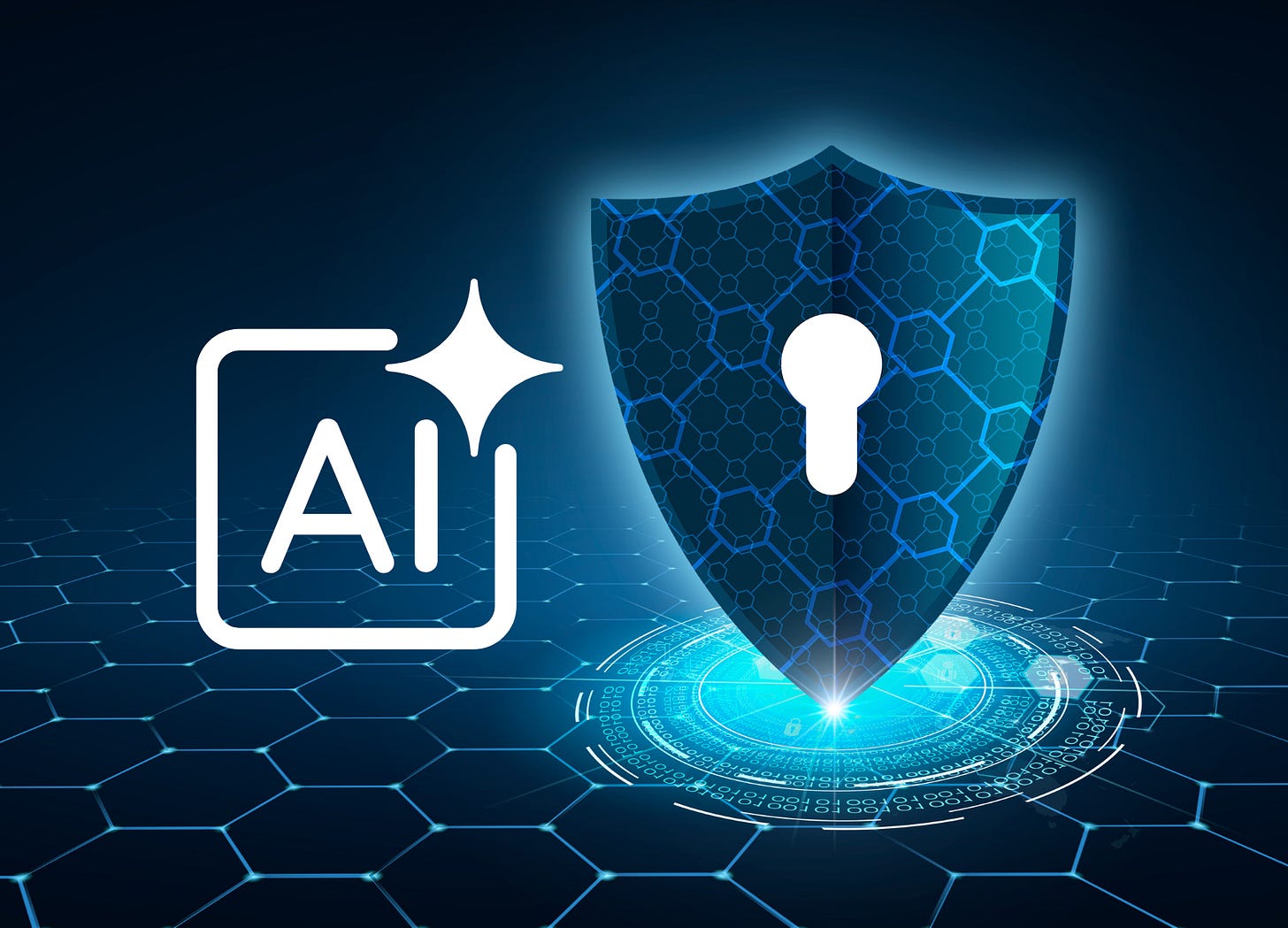AI in Cybersecurity: Benefits, Strategies & Future Trends
In an era where digital threats evolve at breakneck speed, the integration of Artificial Intelligence (AI) in cybersecurity has emerged as a game-changing force, revolutionizing how organizations protect their digital assets and sensitive information. As cyber attackers become increasingly sophisticated, leveraging advanced techniques to breach even the most robust security systems, traditional cybersecurity measures are struggling to keep pace. This is where AI steps in, offering a powerful ally in the ongoing battle against cybercrime.
The marriage of AI and cybersecurity is not just a technological advancement; it’s a paradigm shift in how we approach digital security. By harnessing the power of machine learning, deep learning, and neural networks, AI-driven cybersecurity solutions can analyze vast amounts of data in real-time, identify patterns invisible to the human eye, and predict potential threats before they materialize. This proactive approach is transforming the cybersecurity landscape from a reactive stance to a predictive and preventive model.

As we delve deeper into this article, we’ll explore the multifaceted benefits of AI in cybersecurity, from enhanced threat detection and automated incident response to the reduction of human error and the ability to stay ahead of evolving cyber threats. We’ll also examine the strategies organizations can employ to effectively integrate AI into their cybersecurity frameworks, ensuring they maximize the potential of this groundbreaking technology. Finally, we’ll cast our gaze towards the horizon, discussing the future trends that are set to shape the intersection of AI and cybersecurity in the coming years.
Whether you’re a cybersecurity professional, a business leader, or simply someone interested in the cutting edge of digital security, this comprehensive exploration of AI in cybersecurity will provide valuable insights into how artificial intelligence is fortifying our digital defenses and paving the way for a more secure cyber future. So, let’s embark on this journey to understand how AI is revolutionizing the world of cybersecurity, one algorithm at a time.
The Benefits of AI in Cybersecurity
The integration of AI in cybersecurity brings a multitude of advantages that are reshaping the digital security landscape. Let’s explore some of the key benefits:
Enhanced Threat Detection and Prevention
One of the most significant advantages of AI in cybersecurity is its ability to detect and prevent threats with unprecedented accuracy and speed. Traditional security systems often rely on signature-based detection, which can be ineffective against new or evolving threats. AI, on the other hand, uses machine learning algorithms to analyze patterns and behaviors, enabling it to identify both known and unknown threats.
Anomaly Detection: AI systems can establish a baseline of normal network behavior and flag any deviations, potentially uncovering zero-day attacks or insider threats.
Predictive Analysis: By analyzing historical data and current trends, AI can predict potential future attacks, allowing organizations to proactively strengthen their defenses.
Real-time Monitoring: AI-powered systems can continuously monitor network traffic, user behavior, and system logs in real-time, providing instant alerts on suspicious activities.
Join Snyk on October 22, 2025 for this one-day event to hear from leading AI and security experts, including Keynote speaker Zack Kass, global AI Advisor and former Head of Go-To-Market at Open AI, and many more!
Automated Incident Response
When a security incident occurs, time is of the essence. AI can significantly speed up the incident response process through automation:
Rapid Triage: AI can quickly assess the severity and potential impact of a security incident, prioritizing threats and allocating resources accordingly.
Automated Containment: In many cases, AI systems can automatically isolate affected systems or block malicious IP addresses, containing the threat before it spreads.
Guided Remediation: AI can provide step-by-step guidance to security teams on how to address and mitigate specific threats, reducing response times and human error.
Reduction of False Positives
False positives are a significant challenge in cybersecurity, often leading to alert fatigue and wasted resources. AI helps tackle this issue:
Contextual Analysis: AI can consider multiple factors and context when evaluating potential threats, reducing the likelihood of false alarms.
Machine Learning Refinement: As AI systems process more data over time, they become better at distinguishing between genuine threats and benign anomalies.
Adaptive Thresholds: AI can dynamically adjust alert thresholds based on historical data and current network conditions, further minimizing false positives.
Handling Large Volumes of Data
In today’s digital landscape, organizations generate massive amounts of data daily. AI excels at processing and analyzing this data at scale:
Big Data Analytics: AI can sift through terabytes of log files, network traffic data, and user activities to identify patterns and potential security risks.
Unstructured Data Analysis: AI can make sense of unstructured data from various sources, including social media and dark web forums, to gather threat intelligence.
Continuous Learning: As more data is processed, AI systems continuously improve their accuracy and effectiveness in threat detection and prevention.
Join Snyk on October 22, 2025 for this one-day event to hear from leading AI and security experts, including Keynote speaker Zack Kass, global AI Advisor and former Head of Go-To-Market at Open AI, and many more!
Addressing the Cybersecurity Skills Shortage
The global shortage of cybersecurity professionals is a pressing concern. AI can help alleviate this issue:
Task Automation: By automating routine tasks, AI frees up human analysts to focus on more complex, strategic security initiatives.
Knowledge Augmentation: AI can serve as a knowledge base, providing instant access to relevant information and best practices for security teams.
24/7 Monitoring: AI systems can provide round-the-clock monitoring without fatigue, complementing human teams and ensuring continuous protection.
Strategies for Implementing AI in Cybersecurity
While the benefits of AI in cybersecurity are clear, effective implementation requires careful planning and execution. Here are some strategies organizations can employ:
Assess Your Current Security Posture
Before integrating AI into your cybersecurity framework, it’s crucial to understand your current security landscape:
Conduct a thorough security audit to identify strengths, weaknesses, and gaps in your existing defenses.
Evaluate your organization’s risk profile and prioritize areas where AI can have the most significant impact.
Assess your data quality and availability, as AI systems require high-quality, diverse data to function effectively.
Start with Specific Use Cases
Rather than attempting a complete overhaul, begin by implementing AI in specific, high-impact areas:
Endpoint Detection and Response (EDR): Use AI to enhance the detection of threats on individual devices and automate response actions.
Network Traffic Analysis: Implement AI-powered tools to analyze network traffic patterns and identify potential threats or anomalies.
Phishing Detection: Leverage AI to improve email filtering and detect sophisticated phishing attempts.
Invest in Data Quality and Integration
The effectiveness of AI in cybersecurity heavily depends on the quality and accessibility of data:
Establish robust data collection and storage practices across your organization.
Implement data integration solutions to ensure AI systems have access to relevant information from various sources.
Regularly clean and update your data to maintain its accuracy and relevance.
Combine AI with Human Expertise
While AI is powerful, it’s most effective when combined with human intelligence:
Train your security team on how to work alongside AI systems, interpreting results and making informed decisions.
Establish clear protocols for when human intervention is necessary in AI-driven processes.
Encourage continuous learning and adaptation as AI systems evolve and new threats emerge.
Ensure Ethical and Responsible AI Use
As with any powerful technology, it’s crucial to implement AI in cybersecurity ethically and responsibly:
Develop clear guidelines for AI use, addressing issues such as data privacy and algorithmic bias.
Regularly audit your AI systems to ensure they’re functioning as intended and not causing unintended consequences.
Stay informed about regulatory requirements and industry best practices regarding AI use in cybersecurity.
Future Trends in AI and Cybersecurity
As we look towards the future, several trends are poised to shape the intersection of AI and cybersecurity:
Advanced Adversarial AI
As AI becomes more prevalent in cybersecurity, attackers are also leveraging AI to create more sophisticated threats:
AI-powered malware that can adapt and evade detection.
Deepfake technology used for social engineering attacks.
AI systems designed to find and exploit vulnerabilities in other AI-based defenses.
To counter these threats, cybersecurity AI will need to become more robust and adaptable, leading to an ongoing AI arms race between attackers and defenders.
Quantum Computing and AI
The advent of quantum computing poses both challenges and opportunities for cybersecurity:
Quantum computers could potentially break current encryption methods, necessitating new quantum-resistant cryptography.
AI, combined with quantum computing, could lead to unprecedented advancements in threat detection and data analysis.
Quantum machine learning algorithms may offer new ways to approach complex cybersecurity challenges.
Edge AI for Cybersecurity
As IoT devices become more prevalent, edge computing is gaining importance in cybersecurity:
AI-powered security systems running directly on edge devices for faster threat detection and response.
Distributed AI models that can operate across multiple edge nodes, enhancing overall security posture.
Privacy-preserving AI techniques that can process sensitive data at the edge without compromising confidentiality.
Explainable AI in Cybersecurity
As AI systems become more complex, there’s a growing need for transparency and explainability:
Development of AI models that can provide clear explanations for their decisions and actions.
Integration of explainable AI in compliance and auditing processes.
Enhanced trust and adoption of AI in cybersecurity through improved understanding of AI decision-making.
AI-Driven Security Orchestration
The future will likely see more comprehensive, AI-driven security orchestration:
AI systems that can coordinate across multiple security tools and platforms for a unified defense strategy.
Automated, AI-powered incident response playbooks that can adapt in real-time to evolving threats.
Predictive security measures that can anticipate and prevent attacks before they occur.
In conclusion, the integration of AI in cybersecurity represents a significant leap forward in our ability to protect digital assets and information. From enhanced threat detection and automated incident response to addressing the cybersecurity skills shortage, AI is proving to be an invaluable ally in the fight against cybercrime.
As organizations implement AI-driven cybersecurity solutions, it’s crucial to approach this integration strategically, focusing on specific use cases, ensuring data quality, and combining AI capabilities with human expertise. Moreover, as we look to the future, trends such as adversarial AI, quantum computing, edge AI, explainable AI, and AI-driven security orchestration promise to further revolutionize the cybersecurity landscape.
In this ever-evolving digital world, staying informed and adaptable is key. By embracing AI in cybersecurity, organizations can not only enhance their current security posture but also prepare for the challenges and opportunities that lie ahead in the digital frontier.



